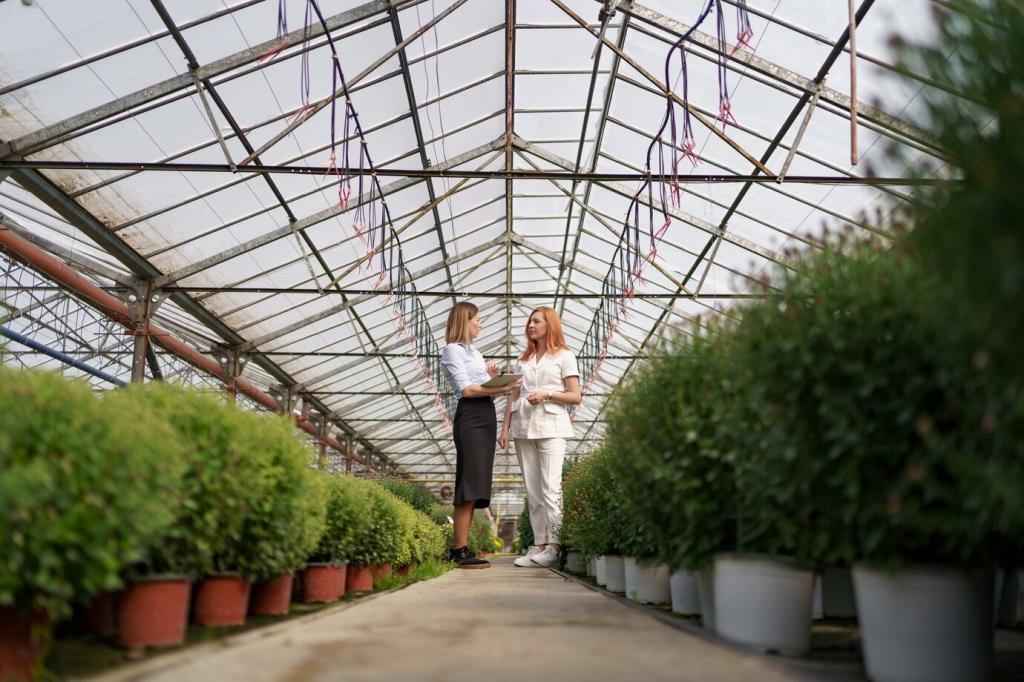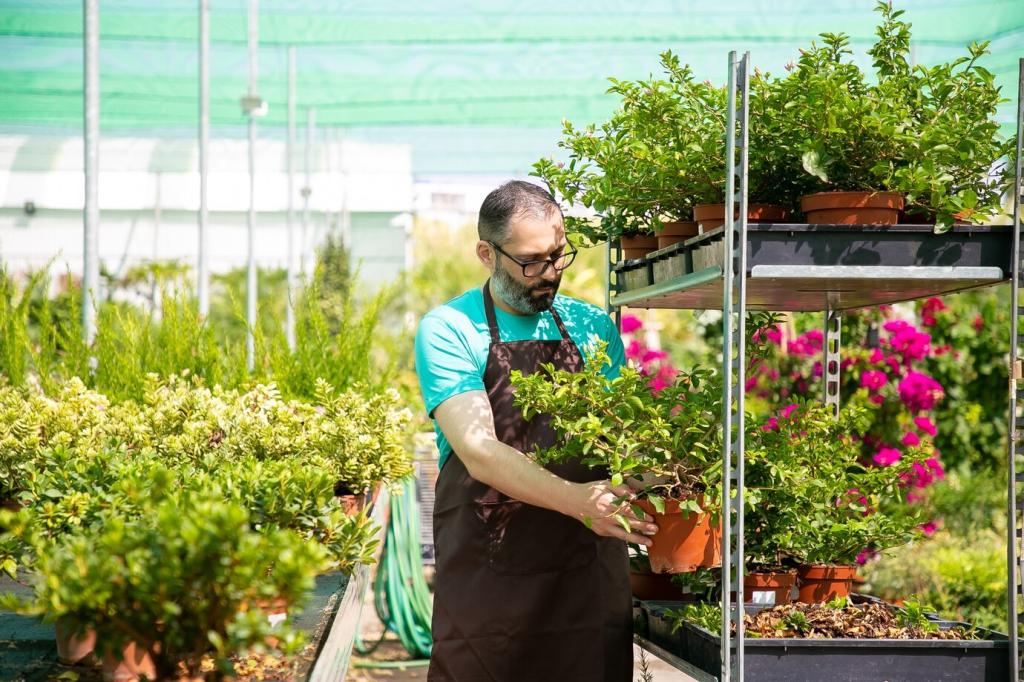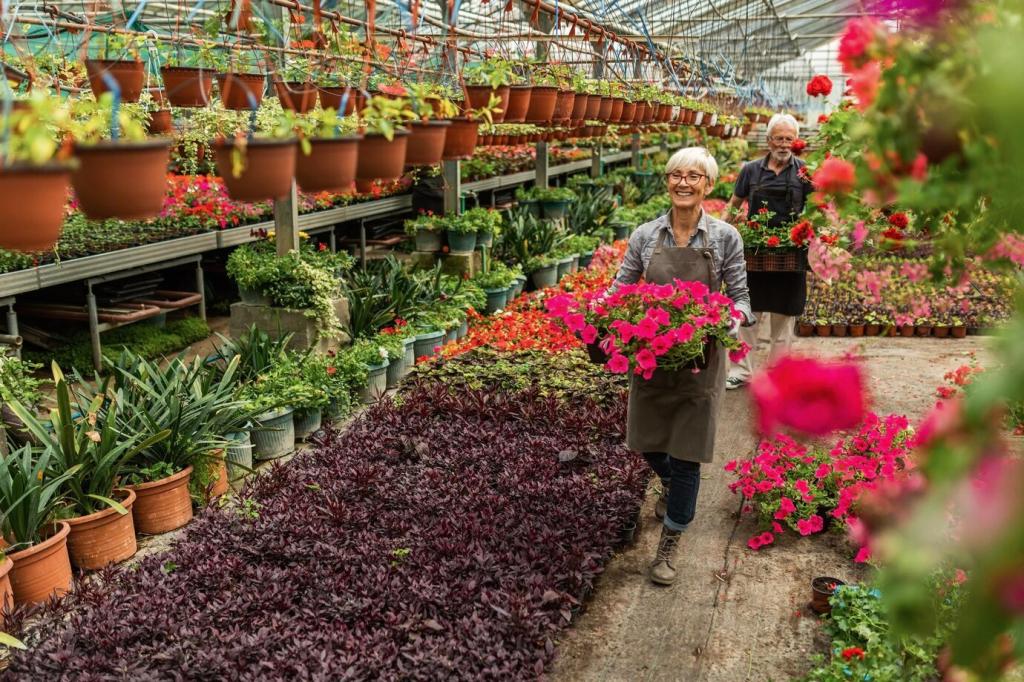
Maximizing Space: How Urban Rooftop Gardens Enhance City Living
Urban environments are constantly evolving to make the best use of limited space, and rooftop gardens have emerged as a vital solution for densely populated cities. These green retreats not only offer aesthetic beauty but also provide functional benefits that support environmental sustainability, public well-being, and improved urban landscapes. By turning unused rooftops into lush gardens, city dwellers and planners are discovering innovative ways to breathe life into the concrete jungle, creating spaces that are productive, relaxing, and ecologically beneficial. This exploration of urban rooftop gardens reveals how maximizing vertical space can transform the way we live, work, and interact in bustling metropolitan areas.
Transforming Concrete Into Green Oases
Reclaiming Unused Urban Spaces
Urban rooftops are often neglected expanses, serving little purpose beyond housing ventilation systems or water towers. By reclaiming these areas as gardens, cities are effectively multiplying green spaces without requiring additional land. Rooftop gardens transform previously overlooked places into thriving environments, providing a haven for relaxation and social interaction. This reutilization not only improves the appearance of buildings but also makes a significant impact on the overall city ecosystem, turning wasted space into productive and attractive assets.
Aesthetic Value in Dense Cityscapes
In densely packed urban areas, visual aesthetics matter as much as functionality. Rooftop gardens serve as lush canvases atop buildings, offering natural beauty that contrasts with nearby high-rises and commercial developments. These verdant landscapes create pleasing vistas both for building occupants and passersby at street level. By introducing foliage, flowers, and even small trees, rooftop gardens soften harsh lines and inject new color and texture into city skylines, making urban environments more inviting and visually engaging.
Enhancing Livability Through Nature
People are naturally drawn to green spaces, and rooftop gardens provide city dwellers with a manageable slice of nature close to home. Access to such gardens improves mental health, reduces stress, and encourages positive social connections. Whether used for quiet reflection, community gatherings, or even outdoor exercise, these elevated gardens offer a welcome respite from the noise and bustle below. Enhanced livability comes not just from the amenities these gardens provide, but also from the psychological relief they offer in the midst of urban commotion.
Environmental Benefits Above the Streets
Reducing Urban Heat Island Effect
Cities are notorious for trapping heat due to their abundance of concrete, glass, and asphalt, which absorb and retain the sun’s energy. Rooftop gardens mitigate this “urban heat island” effect by shading roof surfaces and providing evaporative cooling. Plants absorb solar insolation and release moisture through transpiration, resulting in noticeably cooler air atop and around buildings. Over time, these gardens can contribute to lower ambient temperatures in entire neighborhoods, making urban living more comfortable during hot seasons.
Improving Air Quality
One of the most pressing issues in urban environments is poor air quality, often attributed to high traffic and industrial emissions. Rooftop gardens, with their dense vegetation, trap dust particles and absorb pollutants, acting as natural air filters for their surroundings. The plants’ photosynthesis process also converts carbon dioxide into oxygen, directly benefiting local inhabitants. This vital ecosystem service goes beyond aesthetics—these green roofs play a crucial role in purifying city air, protecting residents’ health, and reducing pollution-related illnesses.
Supporting Urban Biodiversity
City rooftops may seem like unlikely habitats for wildlife, yet rooftop gardens can nurture a surprising variety of plant and animal species. By incorporating native plants and diverse vegetation, these gardens attract pollinators such as bees, butterflies, and birds. This revitalization of urban biodiversity helps restore natural ecological relationships that are often disrupted in city environments. The presence of greenery on rooftops thus creates miniature ecosystems, enhancing city resilience and contributing to overall environmental health.

Urban Agriculture and Community Empowerment
Rooftop gardens have become hubs for urban agriculture, supplying fresh, locally grown produce to neighborhoods that may lack easy access to farmers’ markets or grocery stores. Residents can collaborate on garden maintenance, share knowledge about crops, and distribute harvests, fostering a sense of empowerment and self-reliance. These spaces encourage city dwellers to take part in food systems, promoting food literacy and collaborative problem-solving while transforming rooftops into productive places of abundance.

Reducing Food Miles and Waste
Transporting food from rural areas to cities requires significant resources, from fuel consumption to packaging materials. Rooftop gardens drastically reduce the distance food must travel, minimizing related emissions and packaging waste. The proximity of these gardens also makes it easier to harvest only what is needed, curbing food waste caused by spoilage during transportation. This streamlined system of urban food production fosters a more sustainable and efficient approach to feeding growing city populations.

Encouraging Healthier Eating Habits
Easy access to fresh, home-grown produce inspires healthier eating choices among urban residents. Rooftop gardens make it possible for people, even those living in high-rise apartments, to enjoy seasonal fruits and vegetables picked at their peak. Direct involvement in growing food cultivates a greater appreciation for nutritious meals, educates people about the importance of plant-based diets, and encourages children and adults alike to incorporate more fresh ingredients into their diets. Ultimately, this leads to improved public health outcomes and a stronger connection to the food supply.
Fostering Neighborhood Relationships
The collaborative nature of rooftop gardening brings people together with a common purpose. Residents, who may otherwise have limited opportunities to interact, find themselves working side by side, planting, watering, and harvesting crops or flowers. This teamwork helps break down social barriers, instills a sense of responsibility, and lays the groundwork for lasting relationships. As shared spaces, rooftop gardens become important extensions of the home, reinforcing community identity and pride.
Safe Spaces for Recreation and Relaxation
Not all city dwellers have access to public parks or outdoor recreation opportunities. Rooftop gardens fill this gap by offering safe, accessible, and attractive places for relaxation, exercise, or social gatherings. Children can play in a controlled environment, adults can practice yoga or tai chi, and groups can host al fresco dinners or movie nights. These gardens bring nature into the daily lives of urbanites, helping to reduce stress and promote wellness in ways that bare rooftops or busy city streets cannot achieve.
Platforms for Community Events and Learning
From gardening workshops and cooking demonstrations to seasonal celebrations and art exhibits, rooftop gardens serve as versatile venues for a range of community activities. These events foster knowledge-sharing and self-expression, making the gardens vibrant centers of urban culture. By hosting regular programs, rooftop gardens help residents deepen their skills, form support networks, and strengthen their sense of attachment to the neighborhood. These ongoing initiatives ensure that rooftop gardens remain lively hubs of interaction and inspiration.
Climate Resilience and Energy Savings
Natural Insulation for Buildings
Rooftop gardens act as living insulation for buildings, buffering temperature extremes and reducing heat transfer. In summer, plants absorb and reflect sunlight, keeping interiors cooler without over-reliance on air conditioning. During colder months, the soil and vegetation provide an extra layer of thermal protection, minimizing heat loss. This natural insulation helps maintain comfortable indoor environments year-round, lowering energy bills and enhancing building performance for occupants and owners alike.
Managing Stormwater Runoff
Urban environments often face flooding and drainage challenges due to the prevalence of impermeable surfaces. Rooftop gardens mitigate stormwater runoff by capturing and holding rainwater within their soil and plant networks. This reduces the immediate burden on city sewers during heavy rains and allows water to evaporate or be used by plants gradually. By helping manage precipitation at the source, rooftop gardens contribute to flood prevention and protect urban water systems from being overwhelmed during extreme weather events.
Reducing the Carbon Footprint
The sum of rooftop garden benefits results in a decreased carbon footprint for city structures. Energy savings from reduced heating and cooling needs, stormwater management, and improved air quality all add up to measurable environmental gains. Furthermore, the incorporation of plant life on rooftops encourages the use of renewable resources and eco-friendly practices within the urban landscape. As cities strive to reduce emissions and adopt greener regulations, rooftop gardens stand out as effective, achievable strategies for sustainability.
Boosting Mental and Physical Health
Stress Reduction and Mental Wellness
Nature has a soothing effect on the human mind, helping to alleviate anxiety, depression, and stress. Rooftop gardens offer accessible pockets of greenery where people can escape urban noise, recharge, and find quiet. The presence of plants and the soothing ambiance of a thoughtfully designed garden support meditation, mindfulness, and overall mental well-being. These restorative benefits are especially crucial for those living in fast-paced cities, where opportunities for natural retreat are often scarce.


Opportunities for Physical Activity
Rooftop gardens encourage people to be more physically active, whether through hands-on gardening, exercise routines, or simply by providing inviting spaces to walk and move about. The act of planting, watering, and maintaining a rooftop garden offers a full-body workout, engaging muscles and promoting better fitness. These spaces can also be adapted for group exercise classes or outdoor play, making regular movement an enjoyable part of city living and supporting overall physical health.
Economic Value for Property Owners
01
Increased Property Value and Market Appeal
Green rooftops add prestige, functionality, and unique appeal to residential and commercial properties. Prospective tenants and buyers are drawn to amenities that promote well-being and sustainability, making rooftop gardens a highly desirable feature. The presence of a well-maintained garden can increase a building’s value, fill vacancies faster, and command higher rents or sale prices. As urban populations continue to grow, the demand for such quality-of-life enhancements is expected to rise, making green rooftops a smart investment for property owners.
02
Long-term Savings in Maintenance and Energy
Installing a rooftop garden can extend the lifespan of roofing materials by shielding them from UV exposure and extreme temperature fluctuations. This added protection reduces the frequency of costly repairs or replacements. Additionally, the energy savings achieved by insulating the building and lowering heating and cooling costs translate into a strong return on investment. Over time, these direct and indirect savings add up, further incentivizing building owners to adopt rooftop gardening as part of their property management strategy.
03
Attraction of Environmentally Conscious Tenants
As sustainability becomes a key factor in real estate choice, environmentally conscious tenants are actively seeking properties that reflect their values. Rooftop gardens not only demonstrate ecological stewardship but also foster a vibrant, healthy living or working environment. Businesses looking to enhance their green credentials and residents desiring access to outdoor amenities are more likely to choose buildings with rooftop gardens. This green feature helps attract a stable, loyal tenant base committed to maintaining the property’s value and appeal over time.
Previous
Next
Overcoming Challenges and Ensuring Success
Not every building is immediately suited for a rooftop garden—structural assessments are necessary to ensure that the roof can support the additional weight of soil, plants, and any gardening infrastructure. Waterproofing, drainage, and wind resistance must also be carefully planned to prevent leaks and ensure long-term viability. By working with expert architects, engineers, and landscapers, property owners can design gardens that are both beautiful and safe, meeting all technical requirements for lasting success.
